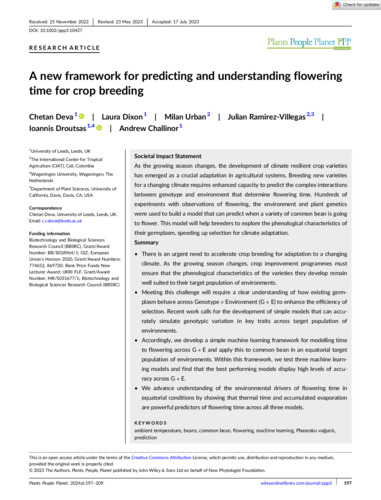A new framework for predicting and understanding flowering time for crop breeding
Societal Impact Statement As the growing season changes, the development of climate resilient crop varieties has emerged as a crucial adaptation in agricultural systems. Breeding new varieties for a changing climate requires enhanced capacity to predict the complex interactions between genotype and environment that determine flowering time. Hundreds of experiments with observations of flowering, the environment and plant genetics were used to build a model that can predict when a variety of common bean is going to flower. This model will help breeders to explore the phenological characteristics of their germplasm, speeding up selection for climate adaptation. Summary There is an urgent need to accelerate crop breeding for adaptation to a changing climate. As the growing season changes, crop improvement programmes must ensure that the phenological characteristics of the varieties they develop remain well suited to their target population of environments. Meeting this challenge will require a clear understanding of how existing germplasm behave across Genotype ∗ Environment (G ∗ E) to enhance the efficiency of selection. Recent work calls for the development of simple models that can accurately simulate genotypic variation in key traits across target population of environments. Accordingly, we develop a simple machine learning framework for modelling time to flowering across G ∗ E and apply this to common bean in an equatorial target population of environments. Within this framework, we test three machine learning models and find that the best performing models display high levels of accuracy across G ∗ E. We advance understanding of the environmental drivers of flowering time in equatorial conditions by showing that thermal time and accumulated evaporation are powerful predictors of flowering time across all three models.

